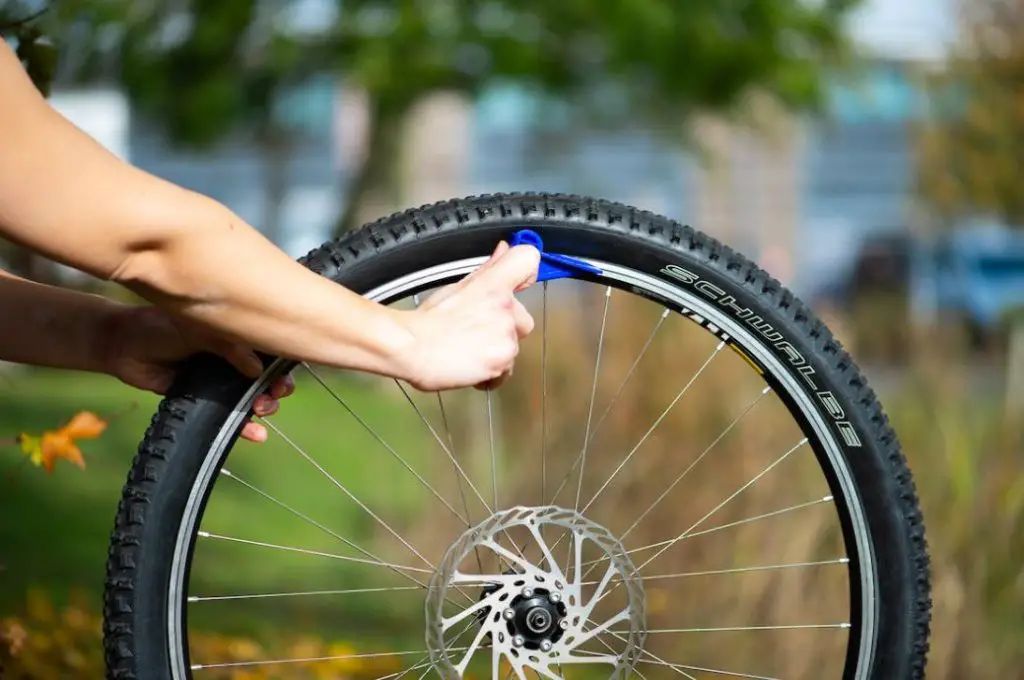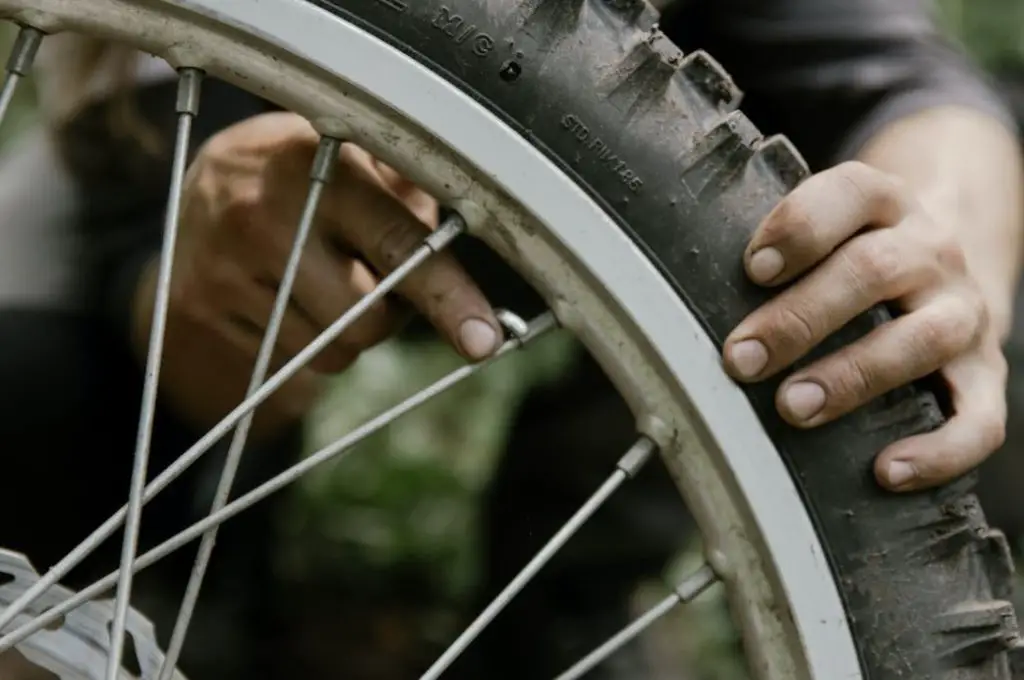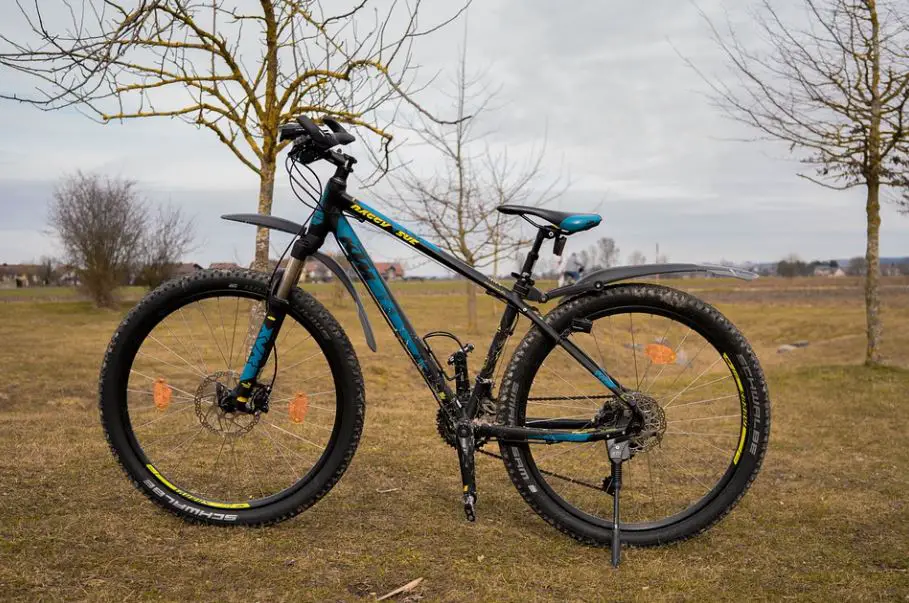You’re all geared up for a thrilling bike ride, but suddenly, disaster strikes – a tire problem!
From unexpected flats to fixing annoying punctures, bike tires have a knack for interrupting your two-wheeled adventures.
In this article, I am about to unveil the five common bike tire problems and, more importantly, their causes and the solutions.
Why Does My Tire Keep Popping?
Bike tire popping happens when the tire gets punctured or damaged in a way that causes the air inside to escape really fast.
Also Read: Bike tire bulging
So, why does my tire keep popping? There are 3 main reasons.

Before we get into that, check if something sharp like glass or nails are still there on the tires which might be making tiny holes as you move.
Tire Pressure
Ideally, your tire pressure should be 80-120 PSI.
Riding with low tire pressure can cause pinch flats, where the inner tube gets pinched between the rim and an obstacle, resulting in a puncture.
On the other hand, if your tire has a high pressure, it can pop. It’s like blowing up a balloon too much until it pops.
You should either release some of the air to bring it down to the recommended pressure or pump it up.
Worn-out Tires
Over time, tires deteriorate and become more susceptible to punctures. The rubber can become brittle, leading to cracks and weakened areas that are prone to punctures.
Plus, worn-out tire treads may not provide adequate traction, making it easier for sharp objects to penetrate the tire.
Replace your tires when they show signs of excessive wear or damage.
Improper Installation
If you don’t put the tire or tube on your bike correctly, it can cause the tube to get pinched or twisted, which are prone to punctures.
When installing a new tire or tube, make sure it is seated properly on the rim and that there are no wrinkles or folds in the tube.
Also Read: Men’s vs women’s mountain bikes
Use tire levers carefully to avoid damaging the tube.
Tire Won’t Pop On Rim
When a bike tire won’t pop on the rim, it can be due to a couple of reasons.

Some possible reasons include the tire being too stiff or flimsy, the shape of the rim preventing the tire bead from popping into its seat, and the air not getting into the valve as quickly as it’s escaping from underneath the tire.
Here are some tips to pop the tire back on rim:
- Use a soapy water solution to lubricate the tire bead and rim to make it easier to pop the tire onto the rim
- Try rotating the tire and then reinflating it. You can also semi-inflate the tire and physically manhandle the tire on the bead. Some tires will properly seat on the bead if you ride them at a higher pressure.
- Make sure the tire fully covers the valve hole and attempt to adjust the tire so that the beads firmly press against the rim bed.
- You can also use an inner tube to strap the tire in place.
- Another technique is to warm up the tire before attempting to seat it onto the rim. Tires that have been stored folded and kept in a cold place will be tough to seat and inflate.
Rear Tires Skipping When Turning
If your rear tire is skipping when turning, you may have a loose or wobbly rear wheel, which could be caused by loose spokes, an out-of-true wheel, or a broken axle.
Another potential cause of skipping is low tire pressure, which can cause the tire to make uneven contact with the road and make it harder to control your bike.
Also Read: 2.4 vs 2.6 tires
Additionally, pedaling while cornering or turning can cause the rear wheel to skip
To solve the issue, first check your tire pressure to ensure it’s at the recommended level.
If that doesn’t solve the problem, inspect your rear wheel for any loose spokes or wobbling, and adjust or replace them if necessary.
Finally, try to avoid pedaling while turning or cornering to prevent the rear wheel from skipping.
Why Is My Back Bike Tire Rubbing?
There are several reasons why your back bike tire rubbing, and each has its own solution:
Wheel Misalignment
Wheel misalignment is the most common cause of back tire rubbing.
Your wheel could be misaligned in the dropouts, causing it to rub against the frame or other components.
To fix this, straighten the wheel by loosening the axle nuts or quick-release skewer, aligning the wheel, and tightening the nuts or skewer again.
Wheel Out Of Dish Or Twisted Rear Triangle
The wheel might be massively out of dish, meaning it’s not properly centered. In this case, you should true the wheel to bring it back to the correct alignment
If the rear triangle of your bike frame is twisted, you’ll need to align it to fix the rubbing issue.
Incorrect Tire Size
If the tire is simply too big for the frame’s clearance, you may need to switch to a smaller tire size to prevent rubbing.
Fender Rubbing
If the tire is rubbing against the fender, you can fix this by adjusting the P-clamps on the fender stays.
To begin, loosen the bolts located in the stay clamp near the wheel axle.
These are the left and right bolts. Once loosened, you can make adjustments to the left and right stays, ensuring there is a minimum distance of 6 mm between the tire and the fender.
Once the desired spacing is achieved, carefully re-tighten the bolts in the stay clamp to secure the stays in place.
Kickstand Rubbing
If the kickstand is rubbing against the rear tire or colliding with the left crank arm, you can resolve this by adjusting the kickstand using an 8 mm hex key.
Knobby Tires On Road Bike
While it is technically possible to install Knobby tires or road bikes, it’s not a good idea.
Knobby tires are designed for off-road or rough terrain, providing extra traction and control.
Road bikes, on the other hand, are typically equipped with smooth or semi-slick tires that offer low rolling resistance on paved surfaces.
Knobby tires are not recommended for road bikes as they are designed for off-road riding and offer less traction on pavement.
Plus, knobby tires can slow down a bike due to extra drag and inertia.

